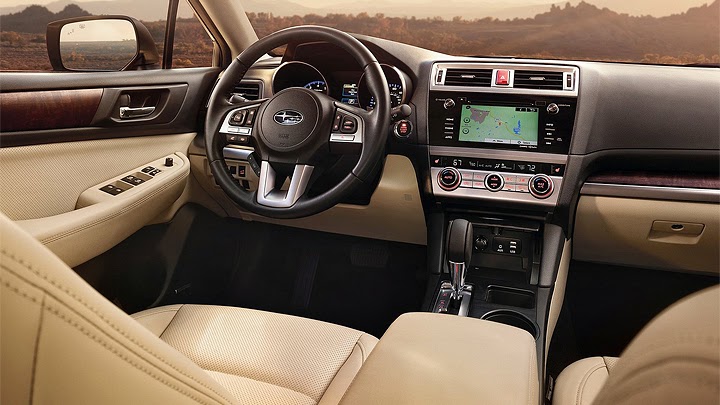
Low-cost companies, to use the right term with which they refer to themselves, are easier to spot because their goals are more obvious. If you use Dacia as an example, take a look at one of its regional websites. Most of the information you’ll see concerns how easy it is to buy one of its cars, whether for their low prices, their payment terms, or the simple possibility of buying them online. And it doesn’t change much when you want to learn about a specific model. Subaru, on the other hand, expresses its frugality in a much more conceptual way. For starters, since it also sells mid-size and even sports cars, money isn’t the biggest concern here. The aforementioned cost efficiency appears through the simple fact that this money is never showed off.
Legacy’s all-new generation, for instance, was able to feature attractive looks and improved construction without recurring to flashy spoilers, fancy kinds of leather or many chrome inserts. And this is precisely what was done with the all-new Outback now – if you didn’t know, underneath such off-road décor lies Legacy’s station wagon variation. The overall styling is still discreet, but the front fascia does look more solid than before. Subaru’s new front grille sits between the sedan’s headlights with daytime LEDs and above an exclusive black portion and bigger fog lights. The sides feature new roof racks and more piano black, but the reason why it looks good is sticking to the typical SW shape: Outback has never been a crossover, and Subaru has always been proud of that.










The rear is the easiest section to mistake for the outgoing car’s, but this is a great thing here because it means that gorgeous design was kept almost untouched. Using big, boomerang-shaped lights aids to a strong character, while removing the chrome bar above the license plate made it sportier. What typical Subaru buyers will actually notice, though, is the space increase achieved through increasing the length by 1.5 cm, the wheelbase by 0.5 cm and the width by 1.78 cm. Such numbers contribute to total volumes of 3,061 L for passengers and 2,075 L for cargo. Subaru also claims to have retuned the suspension, so as to improve handling, and to have increased sound insulation. Other upgrades are pretty much what Legacy showed before, which includes more equipments.
“More equipments”, in this context, means this is the most sophisticated Outback ever. It’ll offer heated items like rear seats, power tailgate, xenon headlights, and the typical array of electronic safety systems, the latter one captained by the EyeSight system and its upgraded cameras. Comfort and entertainment improvements include a new infotainment central, whose touchscreen goes from 6.2” to 7” according to the trim level – the biggest adds satellite radio, text messaging and voice controls, among other functions. And when it comes to the styling, this cabin leaves no doubt it belongs to a Subaru: there are items like two-tone coating and faux wood trim, but they intend to be only welcoming, without even trying to look fancy.










Having improved that much on the interior implied a 72-kg increase to the total weight, which goes against what almost every other automaker has done in the past few years. But Outback makes up for it by cutting the losses with aluminum hood and electric power steering, and improving the aerodynamics with active grille shutters on a specific trim level. Parallel to this, its all-wheel-drive system added hill-holder, torque-vectoring brakes on the front axle, traction control, some new AWD settings for hill-descent control and a whole new “X-mode” for the CVT gearbox. Combine these two groups and you can conclude that this “off-road station wagon” can take you to wherever you want to go without dropping Subaru’s signature rationalism.
Opening Outback’s hood can reveal two engines. The standard option is a four-cylinder 2.5L unit, which received a few tweaks for the new model and now reaches 175 hp and 174 lb-ft – it appears on the 2.5i versions. If you want more power, the 3.6R trims carried over a 3.6L V6 capable of 256 hp and 247 lb-ft – the aforementioned CVT transmission now comes as standard also for Outback, which means Subaru’s midsize lineup doesn’t offer a manual gearbox anymore. This vehicle now makes 25 mpg in the city and 33 mpg on the highway with the weaker engine, and 19/27 with the stronger. Its first appearance was made during this year’s New York Auto Show, and it should arrive at North America later this year.